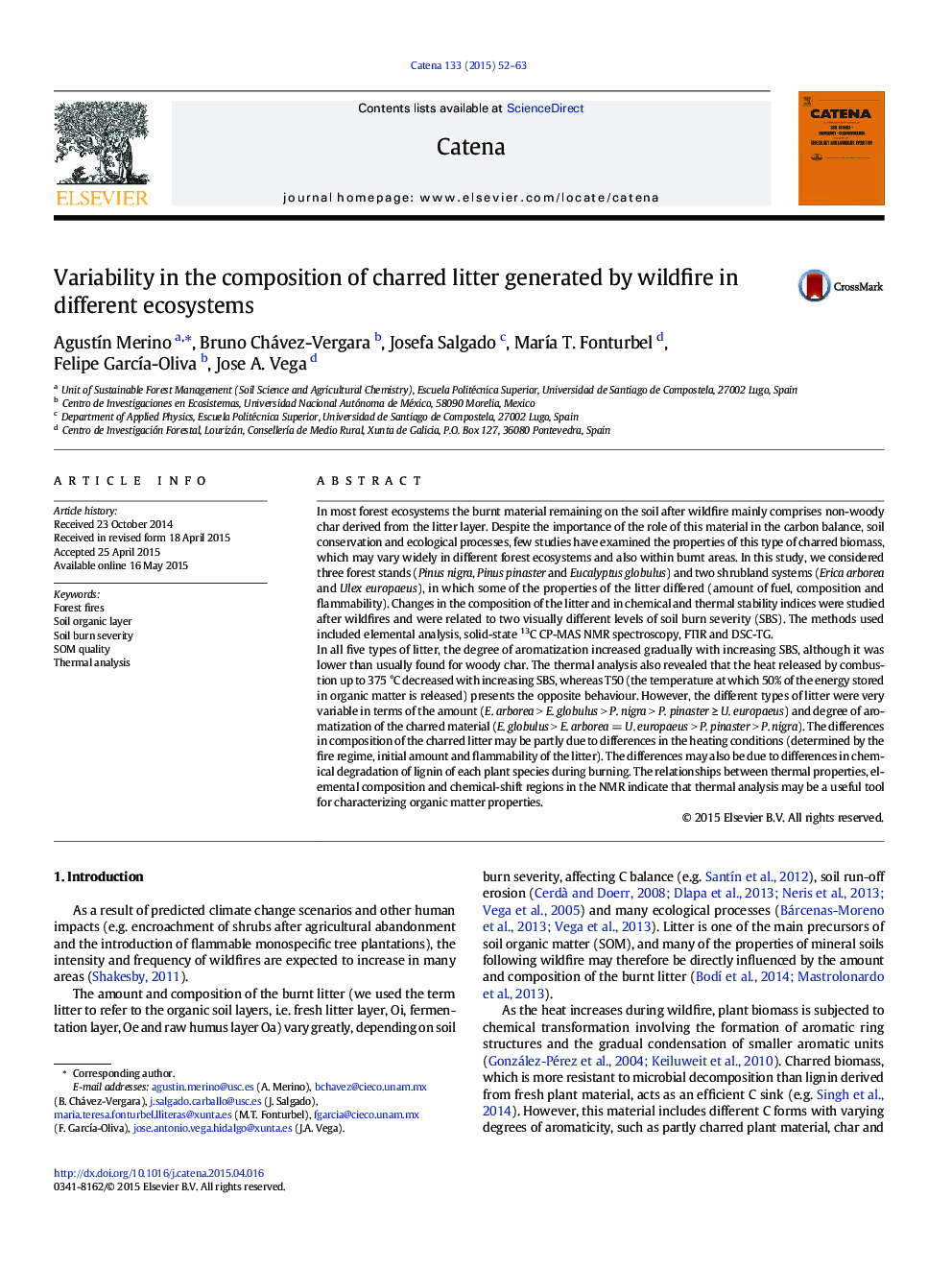| کد مقاله | کد نشریه | سال انتشار | مقاله انگلیسی | نسخه تمام متن |
|---|---|---|---|---|
| 4571022 | 1629219 | 2015 | 12 صفحه PDF | دانلود رایگان |
• Composition and thermal stability of soil organic layers after wildfires
• Great differences in properties of the burnt SOM from different ecosystems
• These differences suggest important variations in the turnover of the burnt SOM.
• The variability is important to understand post fire soil degradation processes.
In most forest ecosystems the burnt material remaining on the soil after wildfire mainly comprises non-woody char derived from the litter layer. Despite the importance of the role of this material in the carbon balance, soil conservation and ecological processes, few studies have examined the properties of this type of charred biomass, which may vary widely in different forest ecosystems and also within burnt areas. In this study, we considered three forest stands (Pinus nigra, Pinus pinaster and Eucalyptus globulus) and two shrubland systems (Erica arborea and Ulex europaeus), in which some of the properties of the litter differed (amount of fuel, composition and flammability). Changes in the composition of the litter and in chemical and thermal stability indices were studied after wildfires and were related to two visually different levels of soil burn severity (SBS). The methods used included elemental analysis, solid-state 13C CP-MAS NMR spectroscopy, FTIR and DSC-TG.In all five types of litter, the degree of aromatization increased gradually with increasing SBS, although it was lower than usually found for woody char. The thermal analysis also revealed that the heat released by combustion up to 375 °C decreased with increasing SBS, whereas T50 (the temperature at which 50% of the energy stored in organic matter is released) presents the opposite behaviour. However, the different types of litter were very variable in terms of the amount (E. arborea > E. globulus > P. nigra > P. pinaster ≥ U. europaeus) and degree of aromatization of the charred material (E. globulus > E. arborea = U. europaeus > P. pinaster > P. nigra). The differences in composition of the charred litter may be partly due to differences in the heating conditions (determined by the fire regime, initial amount and flammability of the litter). The differences may also be due to differences in chemical degradation of lignin of each plant species during burning. The relationships between thermal properties, elemental composition and chemical-shift regions in the NMR indicate that thermal analysis may be a useful tool for characterizing organic matter properties.
Journal: CATENA - Volume 133, October 2015, Pages 52–63
